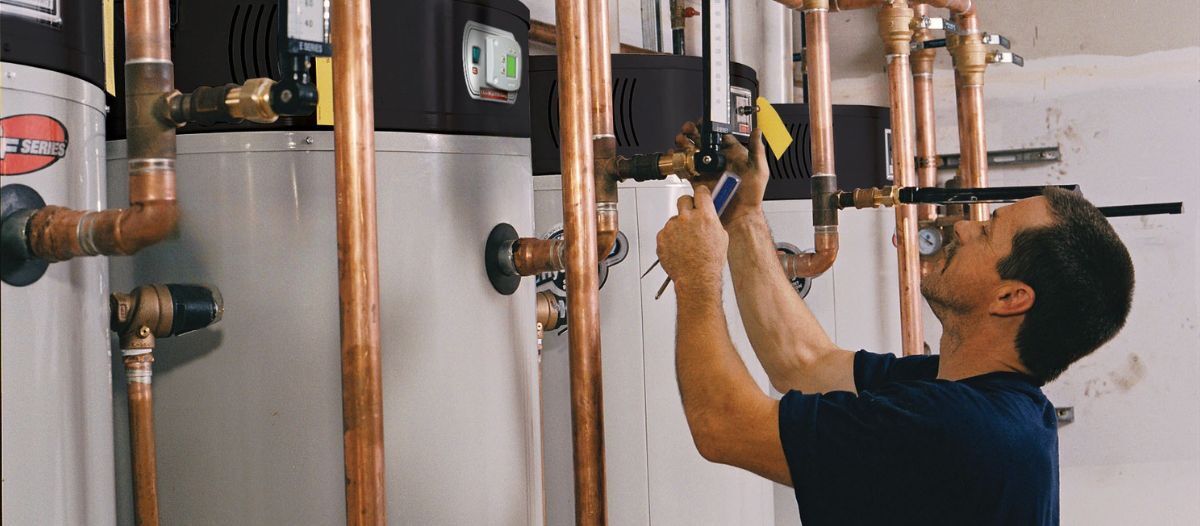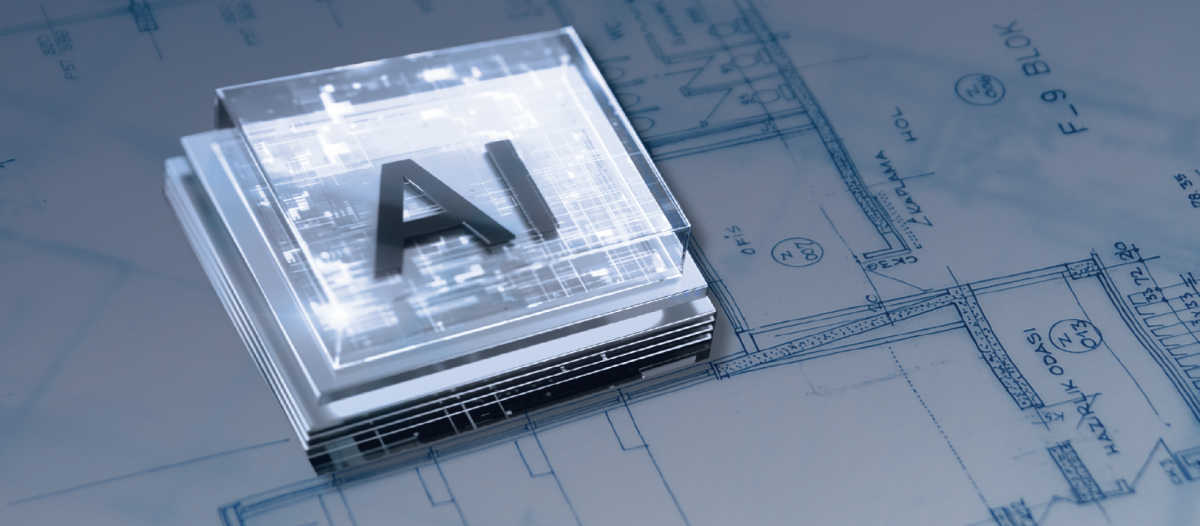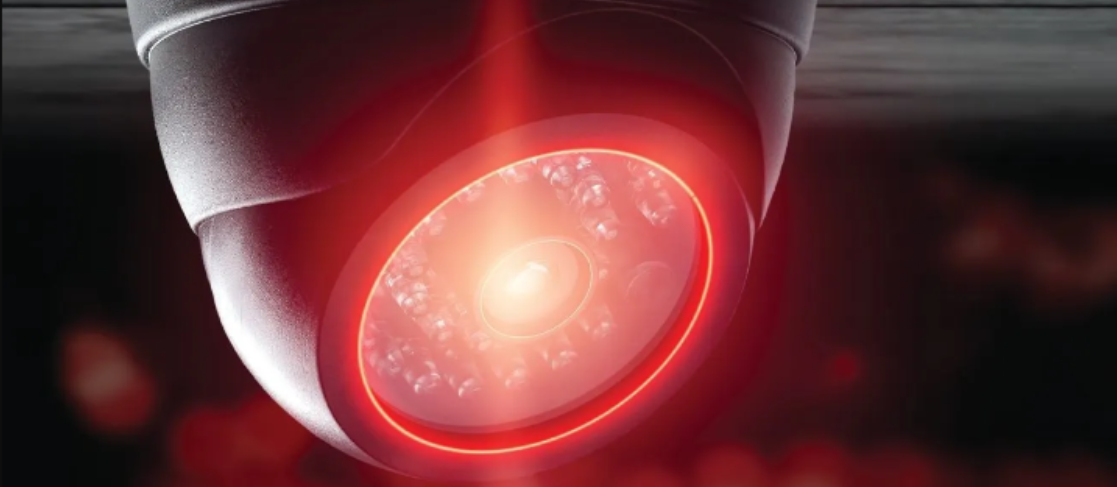Hot Topic
Staying ahead of water heater monitoring & maintenance

Consistent hot water delivery is a must for any facility, enabling not only comfort and convenience, but also safety and sanitation. Any disruption to routine water heating risks complaints from the facility’s occupants and potentially costly repair and replacement needs.
For facility management teams, it is crucial to understand the basics of commercial water heating systems, enabling diligent monitoring and maintenance. And, as facility needs grow and evolve, it is equally important for facility teams to be strategic about water heater upgrades.
While commercial water heating systems can be more complex than those found in residential properties, and while water heating needs can vary depending on the scope and nature of the facility, there are a few guidelines that FMs can keep in mind as they seek to troubleshoot, optimize and maintain their hot water delivery.
Know the signs of aging hot water systems
Any type of water heater failure can disrupt daily operations for the entire facility, making it essential to know the red flags and warning signs of a compromised unit so that action may be taken before the unit goes out completely.
For commercial water heating systems, there are a number of warning signs to look out for, starting with inconsistent hot water. When the temperature at point-of-delivery starts to fluctuate wildly, or when hot water runs out prematurely, it could point to sediment build-up, a faulty thermostat or other issues. Similarly, low pressure throughout the facility can point to a hot water system that has a buildup of sediment or mineral content.
Another point-of-delivery indicator is discolored water. When tap water starts running brown, yellow or red, it almost certainly means there is some kind of corrosion inside the tank or the plumbing system itself.
FM teams should also regularly inspect water heating units, looking for visible signs of wear and tear. Anode rod inspection is especially critical. Common indicators of a potential or pending failure include visible rust and pitting, an acidic smell or unusual popping noises when the water heater is running. Anode rod depletion is another leading indicator of a water heater that needs some care — or perhaps in need of full replacement.
Additionally, FM teams should be vigilant about identifying signs of moisture or pooled water around a water heater tank. The presence of moisture could signify anything from a leaky tank to worn or faulty water valves.
Being consistent in water heater inspections, even creating a log to document potential problems, is the best thing teams can do to stay on top of water heater performance and to identify maintenance needs before they spiral into larger concerns.
A few other best practices for FMs to consider include:
-
ensuring the area surrounding water heating units is kept clear and unencumbered, not only to promote adequate ventilation but also to make it easier for team members to perform regular inspections.
-
monitoring water quality throughout the facility and taking note of scale or corrosion — both potential signs of an issue with one of the building’s water heaters or plumbing system in general.
-
training all personnel to report any abnormalities, including odd noises or inconsistent performance from a water heater. Sometimes, frontline team members will notice issues even before the FM team and can provide early warning.
While following these guidelines will not prevent all water heater issues, they can at least help in catching issues early, potentially addressing them before they become larger problems — extending the life and performance of their water heating equipment.
Optimizing for peak performance
Beyond basic monitoring and maintenance, FM teams can ensure their water heating system is designed for reliability.
One of the best ways to prevent a disruption to hot water delivery is to create redundancy. In all but the tiniest facilities, multiple water heaters should be used to promote consistency and to avoid any interruptions. Sharing the load between multiple units not only prevents individual units from being overstressed but also allows for hot water delivery even if one unit fails.
FM teams know the importance of a building management system. Water heaters can be integrated into that system, which provides alarms and alerts for any potential issues; this is another safeguard against abrupt water heater failure. Additionally, integration with a building management system may help to reduce waste or inefficiency, particularly after hours.
For FMs rethinking their water heating system — or reevaluating their plumbing needs just in general — it may be worthwhile to install a smart leak detection valve. Leak detection technology can learn some of the water usage habits of the building, providing immediate alerts regarding any kind of irregularity; for example, irregularities that emanate from a leak in the water heater or elsewhere. This technology provides an early warning about potential problems, allowing FMs to act quickly to make the necessary repairs.
FM teams may also benefit from configuring their water heating system to include mixing valves, which can ensure more consistent temperatures at every point of delivery — allowing the entire system to function at a peak level even if one tank or heater experiences early signs of disrepair. Mixing valves are also important ways to prevent scalding-hot water at the point of delivery, a useful safety feature in hotels, senior care facilities or restaurants.
Expansion tanks can be good additions to an existing hot water system, as well, providing a way to handle pressure changes more smoothly — potentially cutting back on wear and tear to tanks and internal components.
Planning for facility expansion
Facility expansion can provide particular challenges, often requiring the addition of new water heaters or a complete reconfiguration of existing systems.
Challenging though it may be, facility expansion may be a real opportunity for teams to optimize water heater performance and longevity, starting by investing in new units to ensure full redundancy.
When selecting new water heaters for a commercial space, there are several factors to consider. First and foremost is size. When a water heater is undersized, it may make it more challenging to meet daily demands for water heater use, potentially resulting in complaints or inefficiencies. Oversized units can be just as problematic, but for different reasons: with an oversized water heater tank, the rapid on-and-off of equipment may lead to mechanical degradation, ultimately causing premature equipment failure and costly repairs.
Of course, not all water heaters have tanks, which brings up another key consideration: space in the mechanical room. It is crucial to ensure sufficient space for water heaters to operate and vent properly, as well as for FM team members to have the room they need for maintenance and repairs. Tankless heaters may be worth considering in mechanical rooms that are especially cramped.
Tankless heaters can also provide an option for organizations looking to become more energy efficient — but they are hardly the only such option. Even more conventional tanks and boilers can be designed to conserve energy; just look for ENERGY STAR certified models. There is no prescriptive solution here — it is a matter of choice, based on the specific layout and needs of the space.
Choosing a new water heater can also provide facility teams with an opportunity to revisit their approach to insulation, specifically for hot water pipes. This can be one of the most meaningful and cost-effective ways to minimize heat loss and to curb energy consumption.
Finally, organizations should consider the regulatory environment. Depending on the state and municipality, it may be necessary to ensure the water heating equipment is ASME-certified, ensuring a high level of safety and reliability for the facility and for its occupants.
Ultimately, choosing new water heaters for a commercial space requires a thorough knowledge of where the facility is now — specifically the number of fixtures, peak demand hours and overall usage patterns — and where it could be in a few years’ time. It is always best to plan ahead for evolving needs and to anticipate whether hot water demand will increase over time.
Prioritizing water heating consistency facility-wide
The bottom line for facility managers is that dependable access to hot water, without interruption, is non-negotiable, particularly as the facility evolves and expands. Mindfulness about water heater monitoring, upkeep and optimization is critical for any facility team to achieve their reliability goals.
For facilities teams, there are many practical ways to ensure a water heating system can accommodate the needs of the space. Routine inspection, with a special eye out for common warning signs, is a good first step. And smart design can help any water heating system work at a more optimal level — whether that is retrofitting an existing system or implementing a new one to accommodate the facility’s growth.

Read more on Operations & Maintenance and Risk Management or related topics Operations and Maintenance Planning and Building Systems
Explore All FMJ Topics









